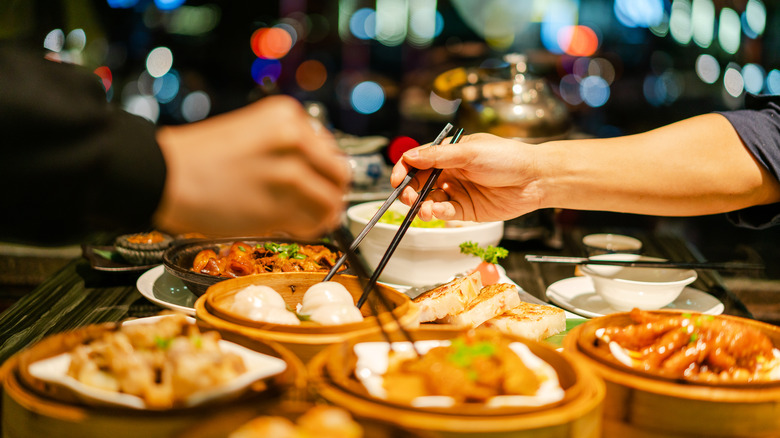20 Excellent Suggestions To China Culinary Heritage
20 Excellent Suggestions To China Culinary Heritage
Blog Article
Top 10 Tips For Local Foods And Specialties To Shop In China
1. Research before making your travel plans. Tip Find out what each region's famous for. Suzhou, Jingdezhen and Tibet are all well-known for their specific items.Pro: It enables you focus on your shopping, and reduces the time wasted.Con: You must be ready and aware of the main points of the region.
2. It is possible to ensure authenticity by buying localTo ensure authenticity and quality Buy items directly from the source point.Pro: Reduces the chance of copyright goods, and also helps local artisans.Cons: Travel to rural or less tourist-friendly regions might be necessary.
3. Visit Workshops and ArtistsChoose small workshops or hubs for artisanal over general stores.Pro: This will give you a better understanding of the artwork, and also allow you to buy directly through the artists.Con: Handmade items can be pricier and harder to negotiate on.
4. Find out about the significance of cultureLearn about the past of objects such as jade or cloisonne carvings.Pro: Helps you appreciate the product and makes them more meaningful.Pro: It could take some time for you to fully grasp the cultural details.
5. Be sure to check the qualityCheck that the items you buy, such as tea, ceramics or other items, are of high quality. standards.Pro: It will protect you from disappointment since you'll receive exactly what you have to.Pro: It takes expertise or guidance to locate high-quality items.
6. Beware of mass-produced goodsTips: Search for original, hand-crafted items rather than replicas made in mass production.Pro: You'll bring home an incredibly precious and special souvenir.Con: It's more expensive and difficult to find genuine craftsmanship.
7. Compare PricesTip: Comparing prices of the same special item at multiple stores and stalls is a good idea.Pro: Helps to identify acceptable pricing ranges and prevent being overcharged.Cons: Can be time-consuming, particularly in large markets.
8. Buy Tea from reputable vendorsTip Tips - In areas like Hangzhou or Fujian you can go to trusted Tea Houses in Longjing and Tieguanyin.Pro: Guarantees authenticity and high quality.Con: The price of teas that are high-quality can be prohibitive for those who are brand new to the country.
9. Local CustomsTips: Some sellers might want to encourage or even require you to negotiate.The pros shopping in a multicultural setting is fun.Con: A misunderstood understanding of customs could lead to awkward interactions.
10. Pack WiselyIt is essential to think about the method of transporting bulky or fragile regional specialty foods like silk or ceramics home.Pro: This service ensures that your items arrive with no damage.Con: Increases logistical challenges and costs that could be associated with shipping.
The Benefits of Shopping for Regional SpecialtiesUnique Souvenirs.Cultural Immersion: By purchasing local products, you are able to get to know the history and craftsmanship of your area.Direct purchases from artists aid local economies.Pros and cons of shopping for local specialtiesSecurity: There is a risk of purchasing counterfeits or inferior quality versions.The transportation of large or heavy items, especially those that are fragile, isn't easy.More expensive: Handcrafted items particularly, can be very expensive.Use these suggestions to make sure you make significant and memorable purchases on your trip to China. View the most popular a taste of China best local foods for website recommendations including China famous food destinations, explore the best local eats in China, discover China regional dishes, a guide to China food scene, discover the tastes of China cities, taste your way through China, Chinese food culture guide, taste the best dishes across China, delicious Chinese dishes to try, explore local Chinese cuisine and more.
Top 10 Tips On Fees And Photography Rules When Going To Temples In China
1. TIP: Be sure to verify entrance fees in advance. Many temples have admission fees that vary from Y=20 to Y=200. Plan your budget by researching tickets prices ahead of time.Pro: Avoid surprises by preparing the proper quantity of cash as well as the digital payment.Con: You could incur unexpected costs, including extra exhibition costs.
2. Bring Cash Payments or Electronic PaymentsCertain temples will only accept cash or popular Chinese payment methods like WeChat Pay or Alipay.Pro: Ensures smooth entry with no payment delays.Cons: There aren't many options for foreigners who aren't familiar with the digital payment app.
3. Photographic Signs are a great location to take a look.Tip: Always check for visible signs indicating whether photography is allowed. Some temples don't allow photography within their sanctuaries, or in close proximity to sacred artifacts.Pro: It prevents unintentional disrespect or violation of rules.Con: There may be different rules within different temples, which requires special attention.
4. Avoid Flash PhotographyDo not use flash in locations that allow photography because it could cause damage to artifacts or disturb worshippers.Pro: Protects and improves the temple’s environment.Con: Low lighting may result in less-than-ideal photos.
5. Respect the privacy and dignity of worshippersTip: Avoid taking pictures of people praying or participating in religious rituals unless you have their permission.Pro: Displays the awareness of culture and respect for privacy of personal information.Cons: Limits your ability capture the atmosphere of the temple in full.
6. Drone restrictions will be in placeTip. Drones are generally not permitted in temple areas. You should check the local regulations for using one to take aerial photos.Pro: You'll stay clear of fines and confiscation of drones.Con: Limits the opportunity to capture unique angles for photography.
7. Be Prepared for Additional FeesTIP: Some temples charge extra to permit your camera if it is professional, such as DSLRs and tripods.Pro: Makes sure you can capture high quality photographs legally.Con: Increases the overall cost of a trip.
8. Dress sensuallyIt is important to dress appropriately when visiting temples. If you don't, you could be denied access or restricted to certain areas.Pro: Allows you to blend in with the surroundings.Con A: Extra preparation is necessary for the summer heat.
9. Beware of the crowds when taking photosTip: Visit early in the morning or late in the afternoon to avoid crowds, which makes it easier to take unobstructed photos.Enhances the quality of your photographs and experiences.Con: Requires you to alter your routine, which can be difficult to do.
10. You Can Ask for Permission if UnsureTip: If you're not sure regarding the rules for photography, ask temple staff or the signs for clarification.Pro: It helps you avoid breaking the rules.Con: Language barriers might make communication difficult.
Be sure to follow Fees and Photo Rules.Respect cultural diversity:Artifact Protection: Protect fragile artifacts and structures from damage.Positive Experiences: Avoid confrontations between temple staff members or worshippers.Legal Compliance - Prevents penalties for not complying with photography rules.Cons of Keeping Fees and Photography RulesIncreased Costs: Additional fees for entry or photography permits can add up.Limited Creativity : Restrictions can hinder the perfect shot.Language Barriers. Problems communicating or understanding local signs.Time-consuming Research: Planning ahead takes extra effort and also time.It is possible to have a tranquil, enjoyable, and respectful visit to the temples of China by adhering to the rules and regulations. This will also protect their spiritual and cultural integrity. Follow the best discover the tastes of China cities for blog advice including explore China riCh food history, a tour of China regional cuisine, discover Chinese street food, China culinary hotspots, a culinary journey through China, explore diverse Chinese dishes, Chinese food culture guide, the best food destinations in China, delicious Chinese dishes to try, explore China riCh food history and more.